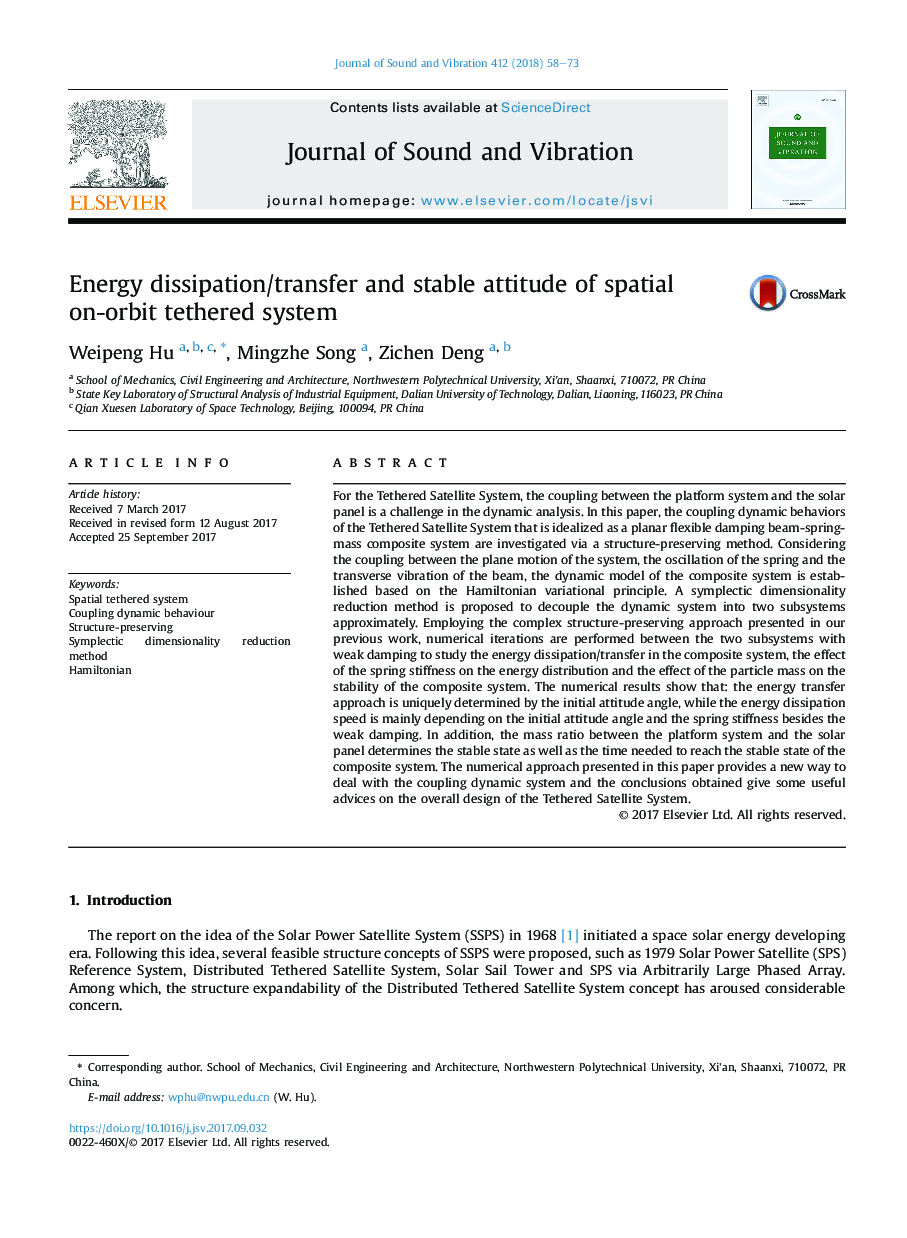| Article ID | Journal | Published Year | Pages | File Type |
|---|---|---|---|---|
| 4923831 | Journal of Sound and Vibration | 2018 | 16 Pages |
For the Tethered Satellite System, the coupling between the platform system and the solar panel is a challenge in the dynamic analysis. In this paper, the coupling dynamic behaviors of the Tethered Satellite System that is idealized as a planar flexible damping beam-spring-mass composite system are investigated via a structure-preserving method. Considering the coupling between the plane motion of the system, the oscillation of the spring and the transverse vibration of the beam, the dynamic model of the composite system is established based on the Hamiltonian variational principle. A symplectic dimensionality reduction method is proposed to decouple the dynamic system into two subsystems approximately. Employing the complex structure-preserving approach presented in our previous work, numerical iterations are performed between the two subsystems with weak damping to study the energy dissipation/transfer in the composite system, the effect of the spring stiffness on the energy distribution and the effect of the particle mass on the stability of the composite system. The numerical results show that: the energy transfer approach is uniquely determined by the initial attitude angle, while the energy dissipation speed is mainly depending on the initial attitude angle and the spring stiffness besides the weak damping. In addition, the mass ratio between the platform system and the solar panel determines the stable state as well as the time needed to reach the stable state of the composite system. The numerical approach presented in this paper provides a new way to deal with the coupling dynamic system and the conclusions obtained give some useful advices on the overall design of the Tethered Satellite System.
